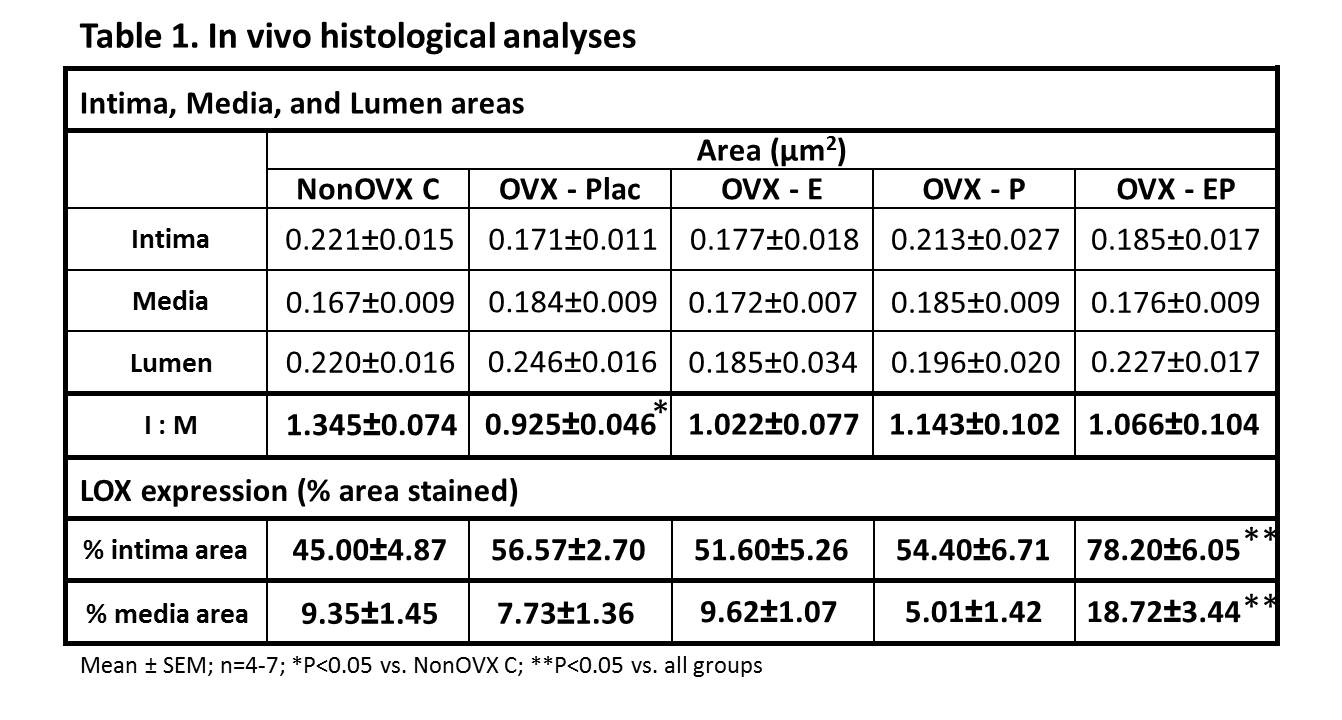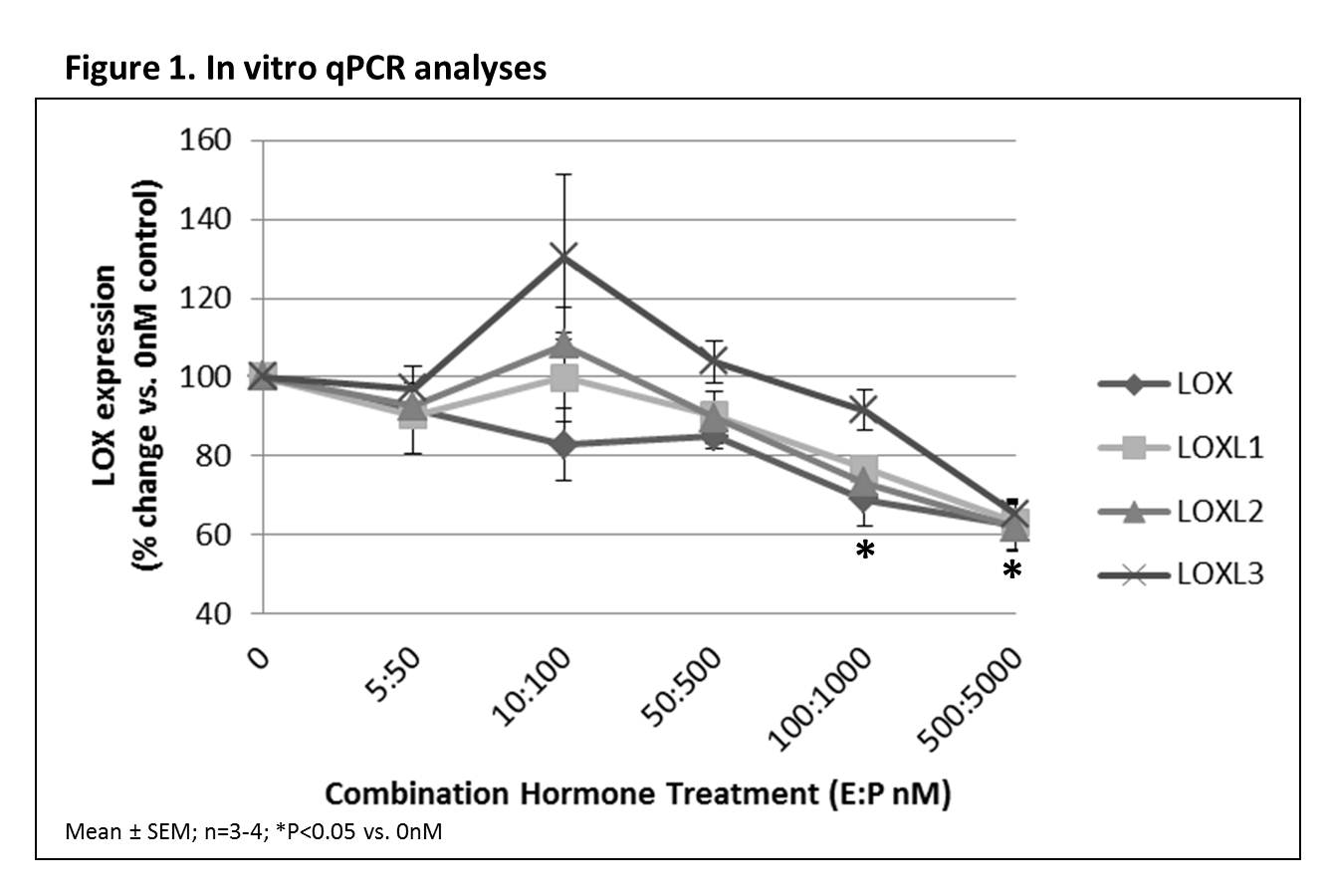Back to Annual Meeting Abstracts
Hormonal Regulation of Lysyl Oxidase in Vascular Remodeling
Jason R Chapman, Deidra JH Mountain, Stacy S Kirkpatrick, Scott L Stevens, Josh D Arnold, Mitchell H Goldman, Michael B Freeman, Oscar H Grandas
University of Tennessee Graduate School of Medicine, Knoxville, TN
BACKGROUND: Lysyl oxidase (LOX) initiates the covalent cross-linking of elastin and collagen in wound healing and has been shown to increase in vascular lesions post-intervention. We have previously demonstrated dysfunctional matrix metalloproteinase regulation in hormone replacement therapy (HRT)-modulated intimal hyperplasia (IH). Likewise, we hypothesize that LOX plays a role in HRT-mediated IH. Here we investigated the effect of estrogen and progesterone on LOX expression in vitro and in vivo.
METHODS: Human vascular smooth muscle cells (VSMCs) were treated with estrogen (Est; 0-500nM), progesterone (Prog; 0-5000nM) or a combination of Est and Prog at a ratio of 1:10 (EP) for 24h. LOX expression and the expression of its homologs LOXL1, LOXL2, and LOXL3 were measured by qPCR normalized to 18S. Aged ovariectomized (OVX) female rats were implanted with slow-release Est (0.72mg), Prog (200mg), combination (EP), or placebo (Plac) pellets and 6 weeks later underwent carotid artery balloon angioplasty. Vessels were stained 14d post-injury with Trichrome-elastin and LOX-specific antibodies. Intima:media (I:M) ratios were used to measure degree of IH development, and tissue levels of LOX were quantified as percent area stained.
RESULTS: I:M significantly decreased in OVX rats receiving Plac vs. non-OVX controls. I:M slightly increased in OVX animals receiving Est, Prog, and EP vs. Plac (Table 1). While Est alone had no effect on the expression of LOX in vitro, EP combination significantly decreased the expression of LOX and all LOX homologs in a dose dependent manner (Figure 1). Conversely, EP combination therapy significantly increased LOX expression in vivo (Table 1).
CONCLUSIONS: EP combination therapy differentially regulates LOX in vitro and in vivo. The upregluation of LOX in vivo may be attributed to macrophage infiltration in response to injury or the milieu of multiple cell types present in whole vascular tissue. Thus, cell types other than VSMCs should be examined for their regulatory effect of LOX. While LOX expression may be playing a role in EP-mediated IH, other mechanisms should be investigated to delineate the role of HRT in IH development. 

Back to Annual Meeting Abstracts
